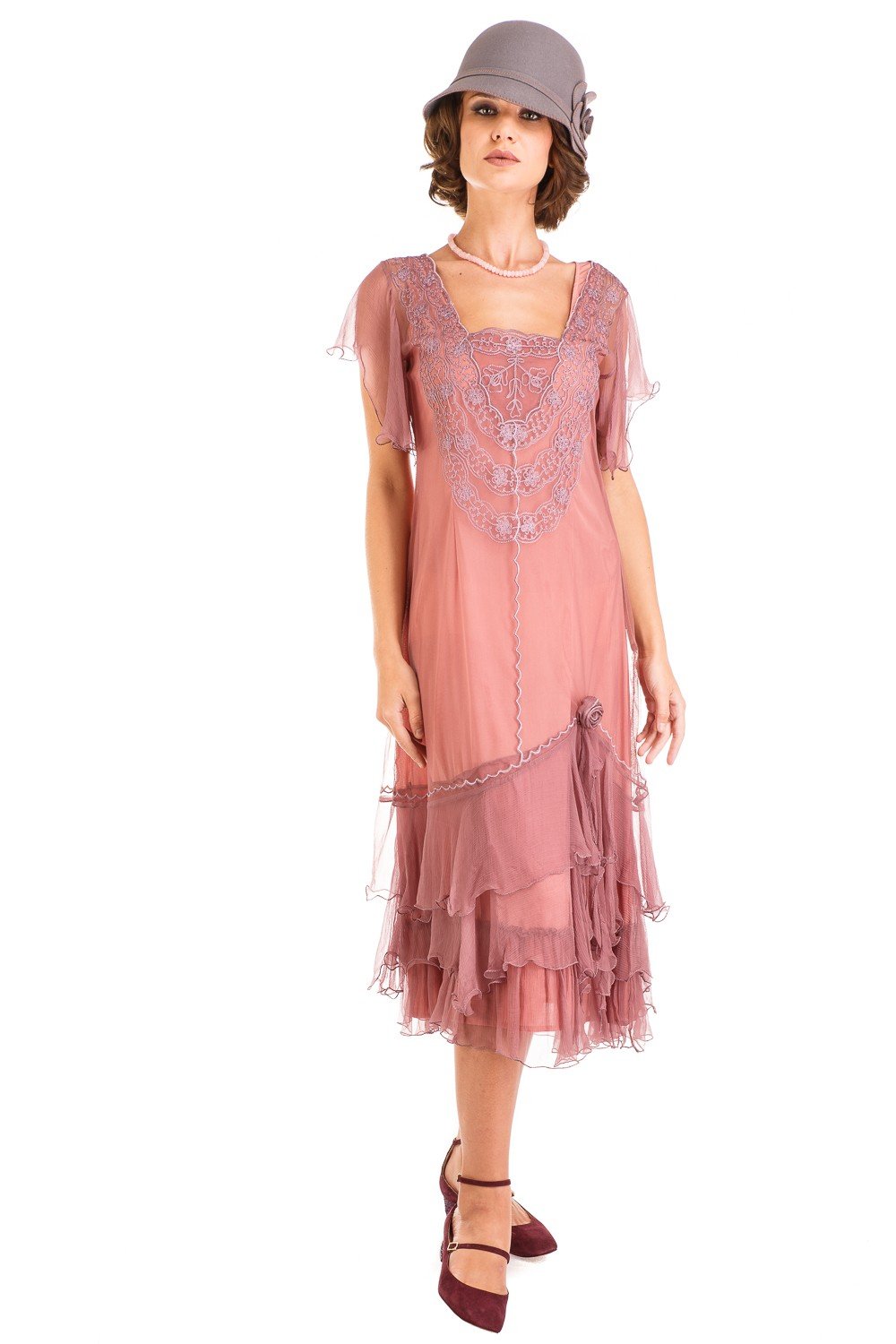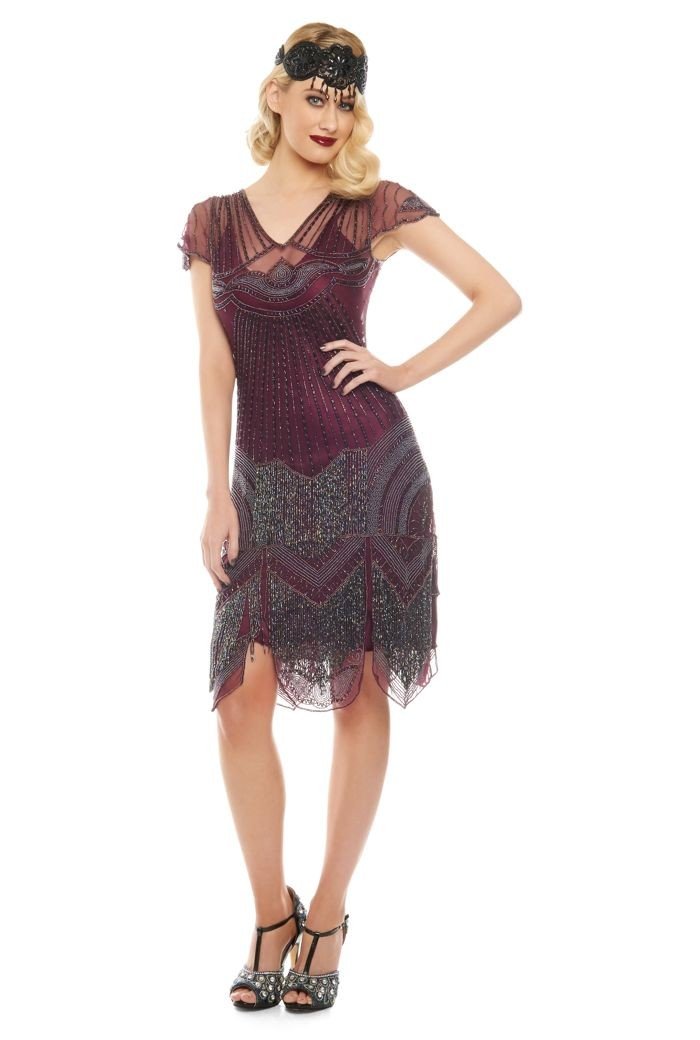How To Dress For Your Skin Tone If you’ve ever fell in love with a dress only to find that the color washes you out, you are not alone. In a perfect world, everyone would look beautiful in absolutely every color. In the real world, however, things aren’t that simple. A color that looks good on one woman can look drab or dull on another. This is because everyone possesses a unique skin tone with complex undertones. Not knowing what colors look good with your specific complexion can set you up for failure. Colors that complement your skin tone will successfully highlight your features and make you look more radiant from head-to-toe. Plus, when you complexion is enhanced by complementary colored clothing, you instantly look healthier and more vibrant to others. If you aren’t sure which colors are for you, read on to learn how to determine your skin’s specific tones and undertones. Once you have done that, take a look at our list to determine which colors will look especially flattering on you.
Determining Your Skin’s Tone
To determine which color will look the best on you, you should first determine your specific skin tone. The colors that will look the most flattering on you greatly depends on the color of your complexion. Factoring in your skin’s tones and undertone will help determine which colors and color combinations will look the best on you. Determining the tone of your skin is easy to do. Any woman who has ever purchased concealer or foundation has likely contemplated their skin’s specific tones. The “tone” is essentially just the obvious color of your skin. Anyone who has purchased foundation has had to make decisions about where their skin’s shade lies in the color spectrum. Girls with very pale skin are going to have a “Light” skin tone. Those with deeper coloring - or those who tan easily - tend to have a “Medium” or “Olive” skin tone. African-American women have what is considered a “Dark” skin tone.
Determining Your Skin’s Undertone
Determining your skin’s undertones can be a little more complicated. To determine this, take a look at the skin on your wrist or forearm in bright, natural sunlight. It should be relatively easy to determine which of the following undertones you possess. Also, consider whether you prefer wearing gold or silver jewelry. Remember - no matter your skin’s tone (Light, Medium, or Dark), you can possess either Warm or Cool undertones.
Warm Undertones
If your skin has warm undertones, it has a naturally golden appearance. This means that the concealer you use also is more yellow or gold than similar shades. If you that you tan relatively easily and you prefer wearing gold or rose gold jewelry, your skin likely has warm undertones.
Cool Undertones
Alternative, skin with cool undertones has a red or pink tinge. Think of the concealer you use - if it is pinker than other similar shades, you probably have cool undertones. Those with ruddy complexions, that burn easily in the sun, or look best in silver jewelry most likely possess skin with cool undertones.
Neutral Undertones
There are a select number of people out there with neutral - or green-ish - undertones. Typically, people with an “Olive” skin tone possess this versatile, neutral undertone. This skin tone is the rarest - and most versatile - of all, and typically only present in women with Medium skin tones.
Choosing The Best Colors For You
When it comes to choosing colors for your clothing, you must first go back to basics. Anyone who has taken an art class is sure to remember the color wheel. This circular spectrum visually represents how colors relate to one another. It is also the basis for color theory, which dissects and explains the way colors relate to one another. There is no steadfast rules when it comes to combining colors. If you ever get stumped, however, just consult the color wheel. The color wheel is comprised of a few different color categories. Primary Colors - Yellow, Red, and Blue - are the backbone of the color wheel. Every other color is essentially a result of mixing these tones together. Secondary Colors - Orange, Purple, and Green - are the main colors that result from combining primary colors together. Then, you have the what are considered Tertiary Colors. These hues are a result of mixing primary and secondary colors together. This gives you rich, dimensional colors like Coral, Aqua, and Burgundy.
Warm & Cool Colors
In general, colors can be broken down into two intuitive categories. Warm colors are those with red and orange undertones. Colors like Coral, Brown, and shades of Yellow fit into this category. In contrast, cool colors are those that have Blue, Green, and Purple undertones. Wearing warm and cool colors together isn’t necessarily a faux pas. With that said, outfits are more pleasing when they feature one or the other. Luckily, you can find “warm” and “cool” shades of virtually any color. For example, a shirt that is bright, sunny yellow is inherently warmer than a shirt that is a mustard hue. Similarly, a lime green
Neutrals
You can’t talk colors without mentioning Neutrals. These incredible colors are an easy way to create incredibly sophisticated outfits. This is because they pair well with nearly any color on the color wheel. Black and White are bold neutrals that create a striking contrast. Primary colors like Blue, Yellow, and Red look sharp when paired with Black or White. If you are looking outside of primary colors, a good rule of thumb is to pair black with darker colors only. White is a bit more versatile and can be paired with both light and dark colors. Black and White aren’t the only two neutrals around. Shades of Gray, Brown, and sometimes Navy are adaptable colors are also considered “Neutral.” Neutrals always look great when paired with other neutrals. Too many neutrals, however, can make your closet drab and uninteresting.
The Best Colors For Your Skin Tone
Light Skin with Cool Undertones
If you have porcelain or alabaster skin, you likely have light eyes and ashy hair as well. If you want to play it safe, warm neutrals look beautiful when paired with this complexion. Be careful when wearing too much Black or Navy, which can easily overwhelm. Or, look for clothing that is pastel in color, which will perfectly complement your very pale features. Light pinks, blues, and yellows are especially flattering. To create a striking contrast, don’t shy away from wearing jewel tones. Dresses that are Scarlet, Hunter Green, or Peacock will also look incredibly becoming.
Light Skin with Warm Undertones
If you have very fair skin that maintains warm undertones, the tertiary colors we mentioned earlier will be the most flattering. Summery colors like Coral, Peach, or Blush will look especially striking. Or, opt for complimentary colors like lavender, mint green, or a pale yellow, which are perfectly on-trend. Harsh colors like Cobalt Blue, Lime Green, or Orange can be too bright when paired with this type of complexion.
Medium Skin with Cool Undertones
Women who possess a medium skin tone don’t have to worry about wearing too many dark colors. If your skin has cool undertones, dark, rich colors can actually look incredibly opulent. Luxurious shades of cool colors will especially highlight your features. Try Hunter Green, Emerald Green, Olive Green, or Navy Blue to successfully bring out your skin’s undertones. Be careful when wearing light colors or shades of Beige, which can wash out women with this complexion.
Medium Skin with Warm Undertones
Your golden features will look especially luminous when paired with rich jewel tones. Scarlet Red, Golden Yellow, Royal Blue, and Plum will enhance your complexion. Neutrals are also a great option for women with this skin tone. Try not to wear too much black if you have this specific complexion. Instead, opt for light neutrals like Beige, Camel, White, and Ivory. Shy away from pastels or light pinks, which can look muted and underwhelming in the wrong shade.
Dark Skin with Cool Undertones
Women with dark yet cool skin tend to have very dark hair and eyes as well. These bold, striking features will be both enhanced and highlighted by vibrant, rich colors. Try out bright, eye-catching hues like Magenta, Fuchsia, Radiant Orchid, and Cobalt Blue, which also have cool undertones. If you decide to opt for neutrals, stick to one color from head to toe. An all-white or all-black outfit is incredibly striking when paired with this complexion.
Dark Skin with Warm Undertones
Women with dark skin and golden undertones have perhaps the most versatility when it comes to wearing colors. Bright jewel tones like Ruby Red, Plum, Peacock, or Emerald Green will bring out your golden undertones and leave you looking luminous. Similarly, dark colors won’t overwhelm women with this complexion. Dark Blue, Burgundy, and even Black are all incredibly easy to wear. Stay away from anything with a very pale or cool undertone, like Ice Blue, Silver, or Mint Green. The contrast can look too harsh against your dark skin. White, however, is the one exception.




















Leave a comment